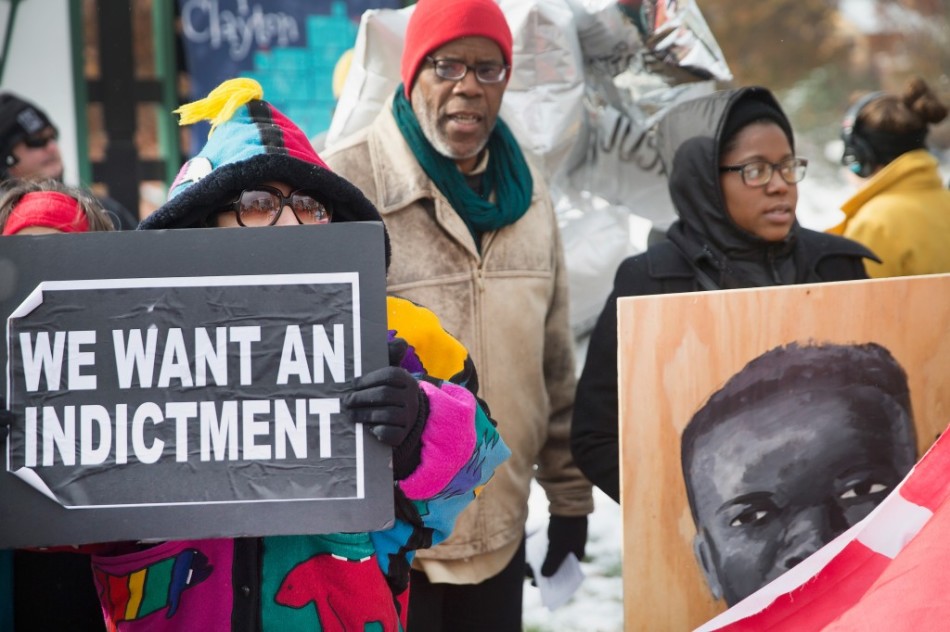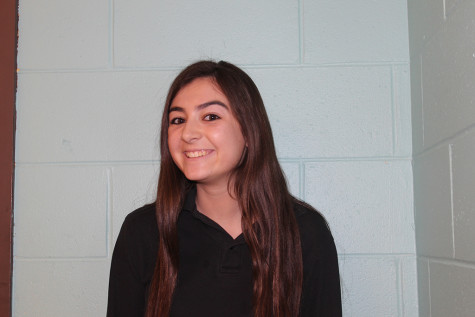Ferguson Verdict Initiates Uprisings
December 6, 2014
After sitting through hours of testimony, the grand jury decided that there was not enough probable cause to indict police officer Darren Wilson for the murder of Michael Brown, a defenseless 18-year-old. Initiates
Their decision, much like the shooting that led up to all of this, sparked violent protests instantly in Ferguson, Missouri.
The duty of the grand jury is to separate fact and fiction. Much of the jury’s decision was based on whether Brown was charging Wilson, surrendering, or running away. After weighing the evidence, at least nine of the 12 members of the grand jury decided that Wilson acted within the limits of the law.
Leading up to this decision, witness testimonies were spoken and were passionately debated. It’s truly complicated because some witnesses say Wilson started shooting after he got out of his car, and some say he started shooting in the car. Some say Brown was visibly backing off, and others say it didn’t look like he had been hit at all.
On the other hand, police officer Wilson’s testimony presents the image of a cop who was scared for his life during a confrontation with Brown, who he claims was physically assaulting him.
Wilson is 6 feet, 4 inches tall and weighs about 210 pounds. Brown was an inch taller and weighed roughly 290 pounds.
The officer said Brown and his acquaintance, Dorian Jones, were walking in the middle of the road, inhibiting regular traffic from passing. He said he told Brown and Jones to move to the sidewalk, and after a brief discussion, Brown became vulgar and rude. Wilson said he called for backup and tried to open the door of the police car. Brown smashed the door shut. They fought, and Brown hit him in the face twice.
Wilson said he had considered using Mace, his baton, or his flashlight before drawing his gun and telling Brown, ‘’Get back, or I’m going to shoot you.’’ Brown then grabbed his gun, twisted it, and dug it down into the officer’s hip. The officer said he dreaded he would die if Brown grasped the weapon. He said he managed to raise the pistol and fire twice. It just clicked. But the third time, the gun went off, shocking both men.
Then, Brown looked up with what Wilson described as ‘’the most intense and aggressive face he has ever seen.’’ The only way Wilson could describe it was ‘’demon-like.’’ Brown retreated towards him again with his hands up.
Wilson tried firing again, but nothing happened. When he tried once more, it went off. Brown then hit him again.
When Wilson looked up, Brown was running away. Wilson got out of his car, called for backup, and began chasing him. Brown then stopped, and he did too. He ordered Brown to get on the ground, but the 18-year-old refused. He made an ‘’aggravated sound’’ and ran back to Wilson. Wilson warned Brown repeatedly to get on the ground, but when he did not obey, the officer fired a series of shots.
Wilson then proceeded to explain his reasoning for why he chased Brown. He said he wanted to keep Brown ‘’contained’’ until police support arrived. He said he thought if he could buy 30 seconds of time until the other officers arrived, they could make the arrest quickly and efficiently. But it didn’t happen that way.
Besides the witness testimonies, the other extremely vital part of this case is the physical evidence. There are three discoveries of major significance: first, the autopsy, which found that Michael Brown was never shot in the back, as some initial eyewitnesses claimed.
Secondly, they found Brown’s blood inside the police car and on Wilson’s firearm. This infers that there was close-range contact as Wilson alleges.
Third, the medical examination of Wilson is essential. The doctors diagnosed him with a small contusion. This appears to cast some suspicion on Wilson’s testimony about the intensity of the confrontation.






